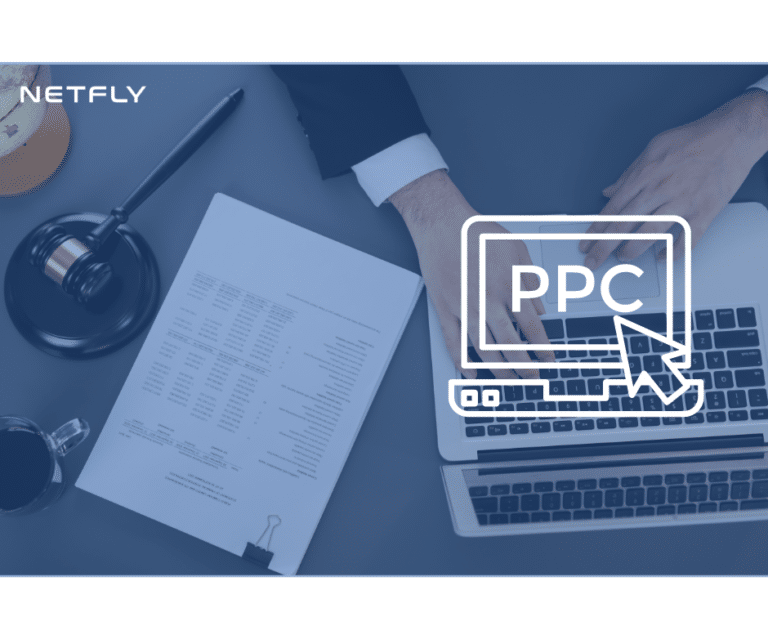You might not know that keyword density, which should ideally be between 1-2%, can have a notable impact on your search engine rankings as a personal injury attorney. If you’re aiming to attract more clients online, understanding SEO basics is essential. From conducting thorough keyword research with tools like Ahrefs and SEMrush to optimizing your content for local searches, there’s a lot to take into account. You can’t afford to overlook on-page optimization elements such as title tags and meta descriptions either. Curious about how all these elements come together to enhance your visibility? Let’s explore the key strategies in detail.
Key Takeaways
- Conduct keyword research to identify high-traffic, low-competition keywords specific to personal injury law and local areas.
- Optimize title tags, headers, and meta descriptions with primary and long-tail keywords to enhance search engine visibility.
- Create quality, in-depth content like case studies and FAQs to engage potential clients and improve rankings.
- Ensure mobile optimization with responsive design, fast load times, and user-friendly interfaces for better client experience.
- Build backlinks through guest posts, local directories, and community partnerships to boost online presence and credibility.
Keyword Research
When delving into keyword research for a personal injury attorney, you’ll want to focus on high-traffic, low-competition keywords that potential clients are actively searching for. Start by conducting a thorough competitor analysis. Look at the keywords your competitors are ranking for and identify gaps where you can have an edge. Tools like Ahrefs or SEMrush can help you uncover these opportunities by providing data on search volume and keyword difficulty.
Next, prioritize keywords with significant search volume but relatively low competition. These are the sweet spots where you can attract more potential clients without getting lost in the sea of high-authority sites. Think about long-tail keywords like ‘best personal injury attorney near me’ or ‘affordable personal injury lawyer.’ These terms might have lower search volumes individually but collectively can drive substantial traffic.
Don’t forget to take into account local SEO. Keywords that include geographical locations, such as ‘personal injury attorney in [Your City],’ often have high search volume and lower competition, making them ideal targets. By strategically selecting and utilizing these keywords, you can improve your site’s visibility and attract more qualified leads, ultimately boosting your practice’s success.
On-Page Optimization
On-page optimization is essential for boosting your personal injury attorney website’s visibility. Focus on strategic keyword placement in headings, content, and URLs to enhance search rankings. Additionally, optimizing meta tags like title tags and meta descriptions will improve click-through rates and user engagement.
Keyword Placement Strategies
To enhance your website’s search rankings, strategically placing keywords in titles, headers, and throughout the content is vital for effective on-page optimization. Begin by targeting long tail keywords, as these are often less competitive and more specific, increasing your chances of attracting highly relevant traffic. For instance, instead of just using ‘personal injury attorney,’ you might opt for ‘experienced personal injury attorney in Dallas.’
Keyword density, the percentage of times a keyword appears compared to the total word count, plays an important role. Aim for a balanced approach; overstuffing can lead to penalties, while too few mentions might not signal relevance to search engines. A good rule of thumb is to maintain a keyword density of 1-2%.
Incorporate your primary keywords in the title tag and at least one header, preferably an H1 tag. Sprinkle secondary keywords naturally throughout the content. Use variations and synonyms to make your text more readable and to capture a broader range of search queries. Remember, user-centric content is key. Make sure your keywords enhance the content’s value, not detract from it. This strategy will help you rank higher and attract potential clients effectively.
Meta Tags Optimization
While strategically placing keywords is fundamental, optimizing meta tags such as title tags and meta descriptions plays a crucial role in improving your search engine ranking and click-through rates. Title tags are the first thing users see on search engine results pages (SERPs). Crafting compelling, keyword-rich title tags not only signals relevance to search engines but also attracts potential clients to click on your link.
Meta descriptions, on the other hand, provide a brief summary of your page content. Though they don’t directly impact your rankings, well-crafted meta descriptions can greatly enhance your click-through rates. Aim for concise, engaging descriptions that include your primary keywords and a clear call to action. Data shows that pages with optimized meta descriptions can see a 5.8% increase in click-through rates.
Local SEO
When focusing on Local SEO for your personal injury law firm, you’ll want to prioritize keyword research strategies tailored to your geographic area. Optimizing your Google My Business profile is important for visibility in local searches. Additionally, building local links can greatly boost your site’s authority and rankings.
Keyword Research Strategies
Effective keyword research strategies for local SEO start with understanding the specific terms your potential clients use when searching for a personal injury attorney in your area. Begin by identifying long tail keywords that reflect the detailed queries clients might use, such as “best personal injury lawyer in [city]” or “affordable accident attorney near me.” These longer phrases often have lower competition and higher conversion rates, making them invaluable for targeting niche audiences.
Next, conduct a thorough competitor analysis. Look at the keywords that other personal injury attorneys in your area are ranking for. Tools like SEMrush or Ahrefs can help you uncover these keywords and understand their search volumes. By analyzing your competitors, you can identify gaps in their strategy and find opportunities to rank for keywords they might be overlooking.
Don’t forget to use keyword tools like Google Keyword Planner or Moz to gather data-driven insights. These tools will provide you with search volume metrics and keyword difficulty scores, helping you prioritize which keywords to target. By focusing on the most relevant and high-impact keywords, you’ll attract more qualified leads looking for legal assistance in your local area.
Optimizing Google My Business
After identifying the right keywords, it’s time to optimize your Google My Business (GMB) profile to enhance local SEO and attract more clients to your personal injury law firm. Start by selecting the most accurate GMB categories for your practice. This helps Google understand your services and display your profile for relevant local searches. For instance, choose categories like “Personal Injury Attorney” or “Law Firm” to zero in on your specific legal niche.
Next, focus on gathering and managing customer reviews. High-quality, positive reviews boost your credibility and improve your search rankings. Encourage satisfied clients to leave detailed reviews, highlighting their experience and the results you achieved. Respond to these reviews promptly to show you value client feedback.
Ensure your GMB profile is complete and up-to-date. Include your business name, address, phone number, and website URL. Add high-resolution images of your office, team, and any relevant legal documentation to create a professional and trustworthy profile. Regularly update your GMB posts with news, events, and promotions to keep your audience engaged.
Local Link Building
Developing a strong network of local backlinks is essential for enhancing your personal injury law firm’s local SEO and establishing authority in your community. You’ll want to start by listing your firm in prominent local directories. These directories, such as Yelp, Yellow Pages, and local Chamber of Commerce listings, can greatly boost your online visibility and credibility. Make sure your firm’s name, address, and phone number (NAP) are consistent across all listings to avoid confusing potential clients or search engines.
Community partnerships also play an important role in local link building. Collaborate with local businesses, charities, and events to create mutually beneficial relationships. For example, sponsoring a local charity event or writing guest blog posts for a community organization can earn you valuable backlinks. These links not only drive direct traffic but also signal to search engines that your firm is a trusted local authority.
Data shows that businesses with strong local link profiles rank higher in local search results, leading to more inquiries and clients. So, don’t underestimate the power of integrating local directories and community partnerships into your SEO strategy. It’s a surefire way to strengthen your firm’s online presence and attract more clients.
Content Creation
Developing valuable and relevant content is crucial for enhancing your personal injury attorney website’s SEO performance. High-quality content isn’t just about filling pages; it’s about creating material that resonates with your audience and answers their pressing questions. Start by incorporating case studies on your site. They offer real-world examples of how you’ve helped clients, and they build trust and authority.
When considering content length, aim for detailed articles that thoroughly cover the topic at hand. Google favors in-depth content, often rewarding detailed pieces with higher rankings. However, don’t prioritize quantity over quality; make sure every word adds value.
Here are some tips to elevate your content:
- Use Case Studies: Showcase your success stories.
- Optimize Content Length: Aim for 1,500+ words for in-depth articles.
- Answer FAQs: Address common client questions to capture long-tail keywords.
- Update Regularly: Keep your content fresh to maintain relevance.
Mobile Optimization
Your website’s mobile optimization is vital for capturing traffic, as over 50% of global web traffic comes from mobile devices. To guarantee your site meets users’ expectations, focus on responsive design and page speed. A responsive design automatically adjusts to different screen sizes, providing a seamless experience regardless of the device used. This is essential for personal injury attorneys because potential clients often search for legal help in urgent situations, using their smartphones.
Page speed is another important factor. Google considers page speed in its ranking algorithm, so a slow-loading site can hurt your SEO. Aim for a load time of under three seconds. You can achieve this by compressing images, leveraging browser caching, and minimizing JavaScript. Tools like Google PageSpeed Insights can help you identify areas for improvement.
Additionally, consider the mobile user’s experience. Ensure buttons are easily clickable, text is readable without zooming, and forms are simple to fill out. A well-optimized mobile site will not only improve your rankings but also increase user satisfaction, leading to higher conversion rates. Prioritizing mobile optimization is a smart strategy to attract and retain clients in today’s mobile-first world.
Link Building
Creating high-quality backlinks is crucial for enhancing your personal injury attorney website’s search engine rankings and establishing its authority. By focusing on strategic link-building efforts, you’ll drive more traffic to your site and improve its credibility. Here are some key tactics to explore:
- Guest posts: Writing guest posts for reputable legal blogs and industry websites is a powerful way to build backlinks. Make sure your content is valuable and relevant to the audience of the host site.
- Broken links: Identify broken links on other websites that could be replaced with links to your content. Reach out to the site owners and offer your content as a replacement. This approach not only helps them but also boosts your backlink profile.
- Local directories: Submitting your website to local business directories and legal-specific directories can enhance your online presence. Ensure that your NAP (Name, Address, Phone Number) information is consistent across all listings.
- Content marketing: Create high-quality, shareable content such as infographics, case studies, and videos. Promoting this content can naturally attract backlinks from other websites that find it useful.
Analytics and Tracking
To maximize your personal injury attorney website, it’s important to utilize analytics and tracking tools to comprehend user behavior and assess the impact of your SEO efforts. By leveraging conversion tracking and traffic analysis, you can gather essential data to optimize your website effectively.
Start with Google Analytics to monitor how visitors interact with your site. Use traffic analysis to identify which pages attract the most visitors and which keywords drive the highest traffic. Understanding these patterns helps you refine your content strategy, making sure you’re reaching potential clients effectively.
Conversion tracking is essential for gauging the success of your SEO initiatives. Track key actions like form submissions, newsletter sign-ups, and phone calls. This data reveals which SEO tactics convert visitors into clients. By identifying high-performing pages, you can replicate their success across your site.
Don’t forget to set up goals in Google Analytics. These goals help you monitor specific user actions, providing a clearer picture of your website’s performance. Regularly reviewing this data allows you to make informed decisions to boost your online presence.
Incorporating these analytics and tracking strategies ensures you’re not just attracting traffic but converting it into valuable leads for your personal injury law practice.
Social Media Integration
Building on the insights gathered from analytics and tracking, integrating social media into your personal injury attorney SEO strategy can significantly enhance your online reach and client engagement. By leveraging platforms like Facebook, Twitter, LinkedIn, and Instagram, you can boost your visibility and foster deeper connections with potential clients.
To maximize social media engagement, consider the following approaches:
- Content Sharing: Regularly share blog posts, client testimonials, and industry news across your social media channels. This not only drives traffic to your website but also establishes your authority in personal injury law.
- Interactive Posts: Create engaging content such as polls, Q&A sessions, and live videos to encourage interaction and build a community around your brand.
- Cross Platform Promotion: Promote your social media profiles on your website and vice versa. This guarantees your audience can seamlessly connect with you on multiple platforms.
- Consistent Branding: Maintain a cohesive brand identity across all social media platforms. This consistency helps build trust and recognition among your followers.
Frequently Asked Questions
How Can Client Testimonials Impact My Search Engine Rankings?
Client testimonials, especially video testimonials, can greatly enhance your search engine rankings. Client feedback provides valuable content and increases trust, leading to higher engagement and better SEO performance. Don’t overlook this impactful SEO strategy.
What Role Do Online Reviews Play in SEO for Personal Injury Attorneys?
Online reviews are essential for SEO. Effective review management enhances your online reputation, building trust with potential clients. Positive reviews signal search engines that your practice is credible, improving your search rankings and attracting more clients.
How Long Does It Take to See SEO Results for a Personal Injury Law Firm?
You’ll typically see SEO results for a personal injury law firm in 4-6 months. A strong content strategy and thorough keyword research are essential. Data shows consistent effort yields the best user engagement and search rankings.
Should I Invest in Paid Ads Alongside My SEO Efforts?
Investigate the truth of the theory: complementing SEO with paid ads can boost visibility. You should invest in paid ads if your ad budget and conversion tracking show positive ROI, enhancing your overall digital marketing strategy.
How Important Is Website Load Speed for Personal Injury Attorney Seo?
Page speed is essential for SEO importance. If your website’s slow, users will leave, and search engines will rank you lower. Faster load times improve user experience, increasing your chances of converting visitors into clients.
Conclusion
To sum it up, mastering personal injury attorney SEO basics can make or break your online presence. By targeting high-traffic, low-competition keywords, optimizing your site, and incorporating local SEO, you’ll be ahead of the game. Remember, the proof is in the pudding—data-driven strategies, mobile optimization, and social media integration will attract potential clients. Don’t overlook analytics and tracking; they’re your roadmap to success. Keep these tactics in your back pocket, and watch your visibility soar.










